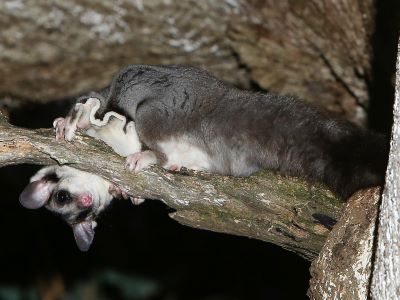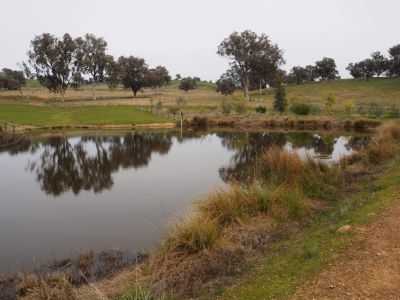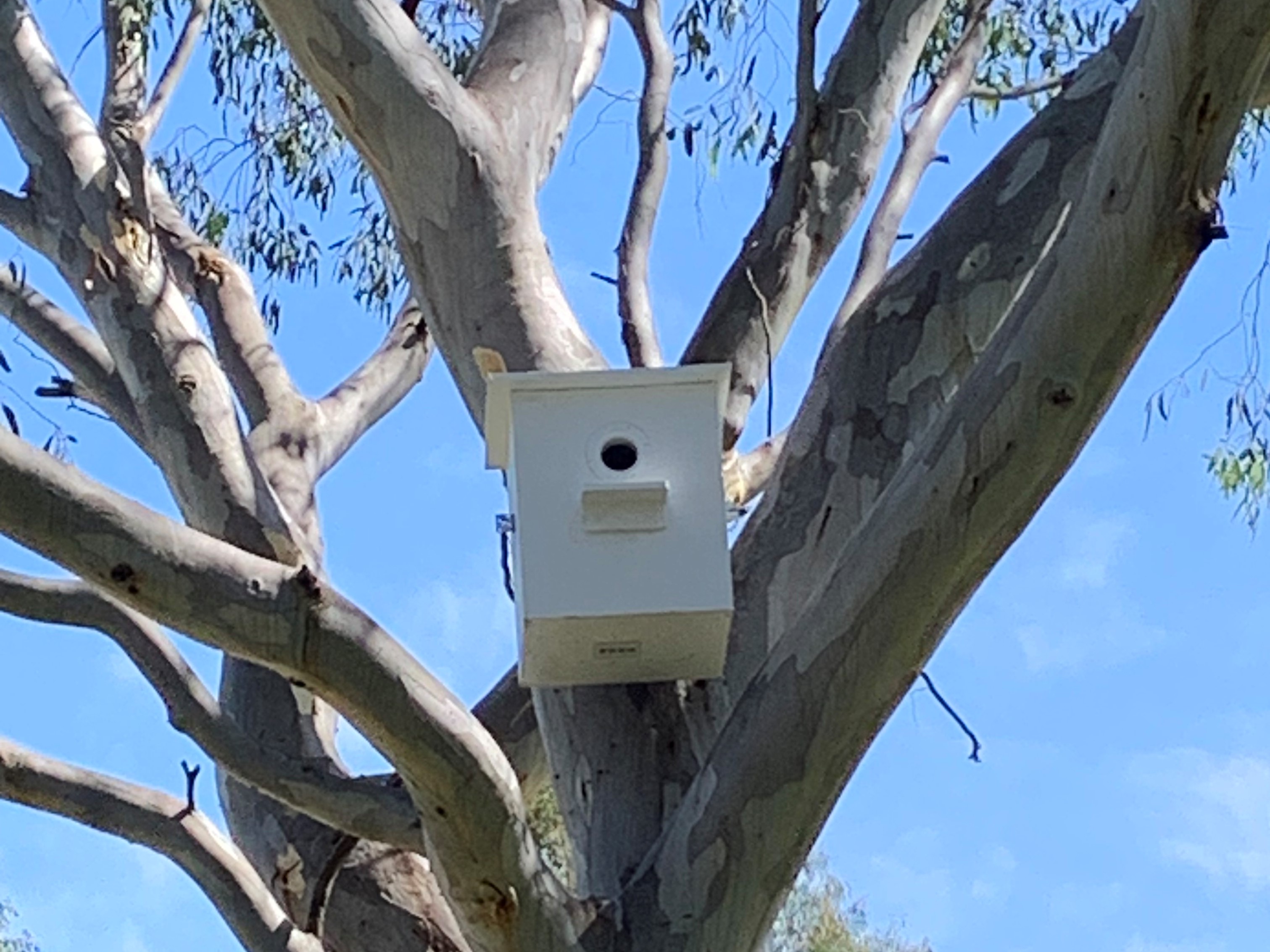What can you do to help our local wildlife?
06 Sep 2022
PRODUCTION ADVICE & NRM NEWS - SEPTEMBER 2022 - ENVIRONMENT
By Shanna Rogers, Senior Land Services Officer
P: 02 6051 2241 | M: 0457 733 261 | E: shanna.rogers@lls.nsw.gov.au

Sometimes we take it for granted just how iconic our local wildlife is. It takes a visit from an inner-city friend or a comment from a relative overseas to prompt us to stop and appreciate what we have on our farms, down at the local riverside park or in our backyards.
Whilst some species like magpies and brushtail possums are common across the region, other wildlife species like brolgas, squirrel gliders and southern bell frogs are declining. Sadly, more than 140 species of native plants and animals are now under threat across the Murray LLS region.
There are many threats to our native wildlife, including feral animals, weeds, vegetation clearing, drought, fire, etc. However, there are also many ways that we can help our local wildlife on farms and in urban areas.
So, what can you do to help local wildlife?
Preserve old, large trees with hollows
Many native wildlife species rely on hollows to nest, breed, shelter, and feed. Hollows are typically only found in old trees. Generally, small holes with narrow entrances suitable for the brush-tailed phascogale or southern myotis bat take about 100 years to form. Medium hollows that parrots use take about 200 years, and the larger and deeper cavities occupied by masked owls and black cockatoos can take almost 300 years!
Retain fallen timber
Fallen timber provides refuge, shelter, and foraging resources for wildlife. Local wildlife reliant on fallen timber includes diamond firetail, bush stone-curlew, yellow-footed antechinus, and southern rainbow skink.
Protect existing remnant vegetation
Remnant patches often contain trees of mixed ages and habitat features such as fallen logs, dead trees, and tree hollows. These features make remnant woodland patches vital for biodiversity, particularly for rare and threatened plant and animal species. To protect existing patches of vegetation, consider:
- restricting livestock access,
- leaving fallen timber,
- allowing native grasses, shrubs, and trees to regenerate, and
- leaving mistletoe.
Retain paddock trees
Scattered paddock trees provide essential habitat for birds and reptiles. They often have their own unique invertebrate communities and act as stepping-stones to promote the movement of animals, such as gliders, through landscapes. Large old paddock trees provide hollows for animals and birds such as parrots to shelter and breed, are often prolific flowerers, are a source of food, and provide habitat for animals such as tree-dwelling geckos and skinks that live in bark crevices.
Establish locally native trees, shrubs, and groundcovers
Planting a wildlife-friendly garden in town or establishing native vegetation on farms creates wildlife habitat. Plantings can also assist with stock shade, shelter, erosion control, and on-farm aesthetics.
Protect rivers, creeks, and wetlands
You can protect rivers, creeks, and wetlands by:
- fencing off to restrict livestock access and installing troughs away from the watercourse
- allowing native plants to regenerate naturally, or you can plant native vegetation to buffer riparian areas and
- leaving fallen timber and snags to provide habitat for wildlife.
Threatened species such as the squirrel glider, regent honeyeater, southern pygmy perch and booroolong frog are associated with healthy riparian systems.
Improve farm dams
Farm dams provide refuge for many native animals, including birds, frogs, dragonflies, and other invertebrate predators that help control pests. You can modify farm dams to make them more suitable for wildlife by:
- excluding or restricting livestock access by fencing,
- planting vegetation around the dam,
- creating varying water depths or even an island in the dam and
- including snags and logs to shelter frogs and tadpoles from the sun and predators.

Protect rocky outcrops and avoid removing surface rocks
Even the smallest outcrops can provide habitat for a wide variety of native animals and plants, including threatened and specialised rock-dwelling plants and animals. You can protect rocky outcrops by managing grazing pressure, preventing bush rock collection, and limiting hazard reduction burning.
Preserve areas of native grassland
Native pastures support many native plants and animals, including birds such as the stubble quail, plains-wanderer, and striped legless lizard. To protect native pastures, consider:
- weed control to prevent encroaching exotic plants and
- strategic grazing to reduce the duration or frequency of grazing periods to allow for the setting of native pasture seed or removal of stock when ground-dwelling birds are breeding.
Take care with hazard reduction burning
Fire can have positive and negative effects on wildlife. Whilst many plant species rely on fire to crack seed coats and trigger germination, intensive wildlife events and inappropriate hazard reduction burns damage wildlife habitats and kill and injure wildlife.
Habitat loss through intensive wildlife events and inappropriate hazard reduction burns can result in the loss of tree hollows and food resources and increased erosion around waterways which are a significant threat to species such as gang-gang cockatoos, koalas and Macquarie perch.
Limit the use of barbed wire in fencing
Thousands of native animals, including gliders, bats & owls, die every year after becoming entangled in barbed wire fences, particularly the top two strands. Replacing existing barbed wire fences with plain wire strands, replacing the top two strands, or covering the top strand with poly pipe in areas of high wildlife use, such as around dams, can prevent wildlife entanglement and subsequent death.
Control feral animals and weeds
Native animals have few defences against feral predators such as foxes and feral cats. Feral herbivores, like rabbits, goats, and pigs, can also cause extensive damage to production areas and native vegetation.
Be a responsible pet owner & keep your pet cat indoors
Unrestrained cats and dogs can wreak havoc on local wildlife populations. Keeping pets contained at night will help safeguard them and wildlife. Ideally, cats should be kept in indoor areas at all times.
Create artificial habitats
Artificial habitats, such as nest boxes, timber cut-offs and old pine fence posts, islands, and variable depths in farm dams, can sometimes be used to replace lost or degraded wildlife habitat. Nest boxes for squirrel gliders and varying the depth of farm dams for waterbirds have been used successfully within the Murray region.
Use fewer pesticides
Try to reduce total pesticide use and ensure as much of your property as possible remains pesticide free. Make sure pesticide does not drift or run off into waterways, dams, or native vegetation.
The use of insecticides affects the food availability of insect-eating woodland birds and kills native pollinator insects. Rodenticides can affect small mammals, and birds of prey (owls and raptors) can receive secondary poisoning.
Citizen science
Citizen science allows the community to gather information on threatened species and fill critical knowledge gaps about wildlife species. Some regional citizen science programs include Wild Pollinator Count, Aussie Backyard Bird Count, FrogID, TurtleSAT and iNaturalist.
No matter where you are in the region, on a farm or in town, we can all do our part in helping local wildlife.
